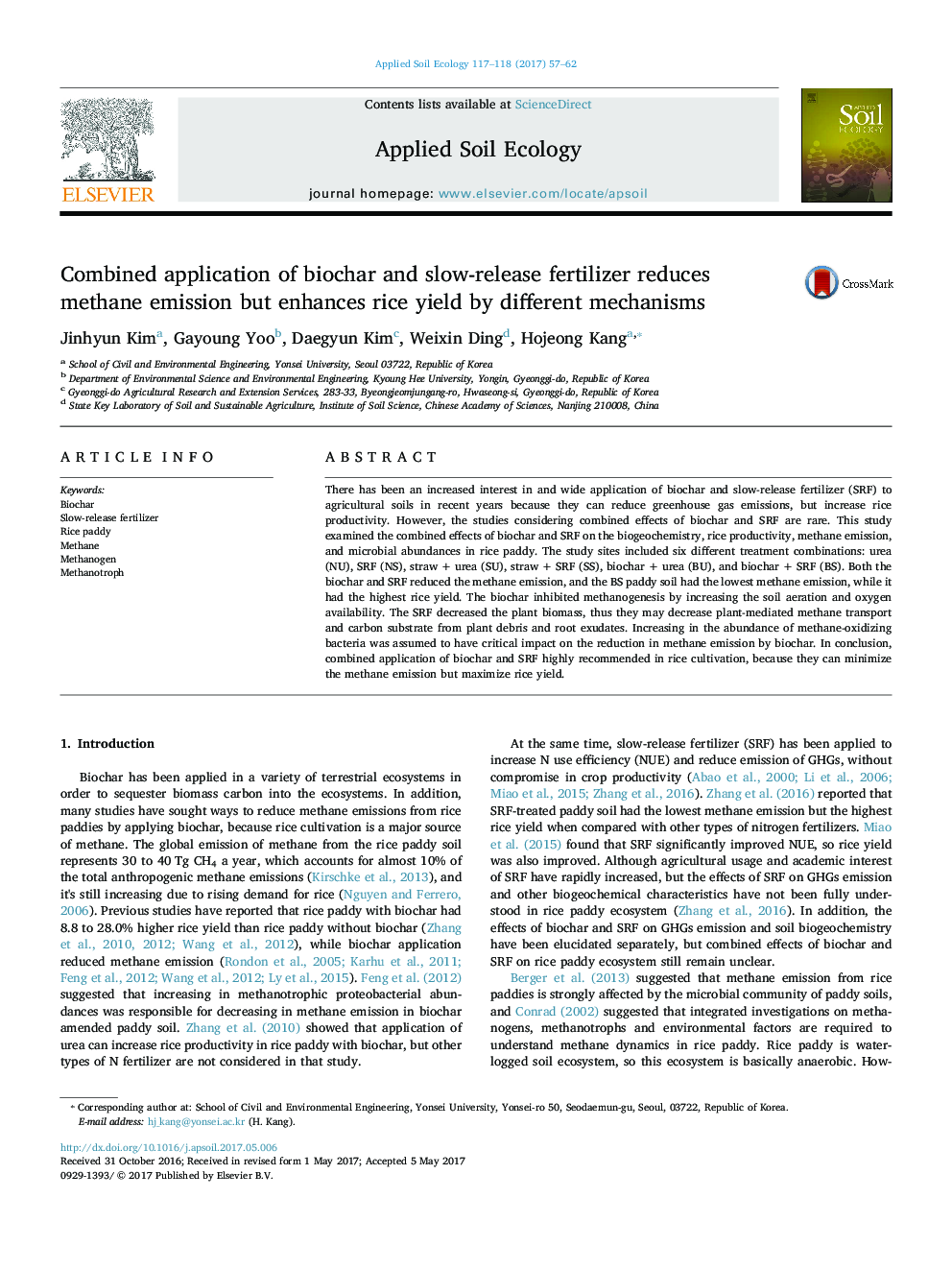| Article ID | Journal | Published Year | Pages | File Type |
|---|---|---|---|---|
| 5742662 | Applied Soil Ecology | 2017 | 6 Pages |
Abstract
There has been an increased interest in and wide application of biochar and slow-release fertilizer (SRF) to agricultural soils in recent years because they can reduce greenhouse gas emissions, but increase rice productivity. However, the studies considering combined effects of biochar and SRF are rare. This study examined the combined effects of biochar and SRF on the biogeochemistry, rice productivity, methane emission, and microbial abundances in rice paddy. The study sites included six different treatment combinations: urea (NU), SRF (NS), straw + urea (SU), straw + SRF (SS), biochar + urea (BU), and biochar + SRF (BS). Both the biochar and SRF reduced the methane emission, and the BS paddy soil had the lowest methane emission, while it had the highest rice yield. The biochar inhibited methanogenesis by increasing the soil aeration and oxygen availability. The SRF decreased the plant biomass, thus they may decrease plant-mediated methane transport and carbon substrate from plant debris and root exudates. Increasing in the abundance of methane-oxidizing bacteria was assumed to have critical impact on the reduction in methane emission by biochar. In conclusion, combined application of biochar and SRF highly recommended in rice cultivation, because they can minimize the methane emission but maximize rice yield.
Related Topics
Life Sciences
Agricultural and Biological Sciences
Ecology, Evolution, Behavior and Systematics
Authors
Jinhyun Kim, Gayoung Yoo, Daegyun Kim, Weixin Ding, Hojeong Kang,
